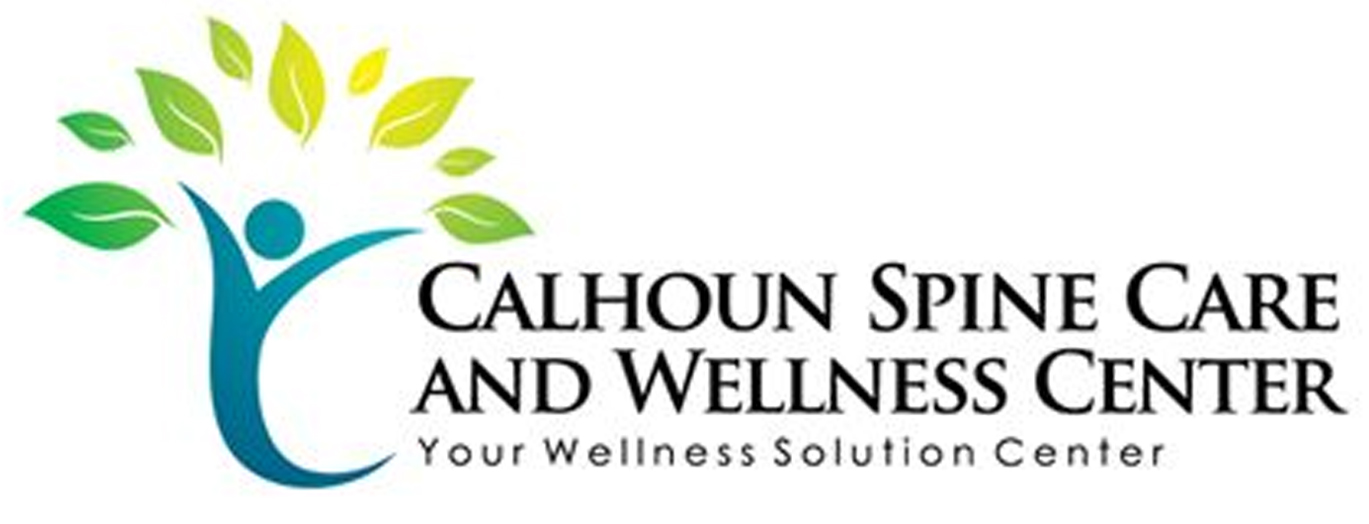If you're struggling with chronic tension headaches, you might be surprised to learn how chiropractors can help alleviate your discomfort. They utilize a range of techniques, from spinal adjustments to soft tissue therapy, each targeting different aspects of headache relief. By addressing the underlying causes, they not only relieve pain but also promote overall well-being. Curious about the specific methods that could work for you? Each approach offers unique benefits that could transform your experience with tension headaches.
Spinal Adjustments
Spinal adjustments can play an essential role in alleviating chronic tension headaches. When you visit a chiropractor, they'll assess your spine and identify any misalignments or subluxations that could be contributing to your headaches. These misalignments can create tension in your neck and upper back, leading to discomfort and pain that radiates to your head.
During a spinal adjustment, your chiropractor uses specific techniques to gently manipulate your spine back into alignment. This process can improve your overall spinal function and reduce nerve irritation, which often helps to relieve headache symptoms. As your spine regains its proper alignment, you might notice a significant decrease in the frequency and intensity of your tension headaches.
It's important to understand that spinal adjustments aren't just a quick fix. Consistent chiropractic care can lead to long-term relief. When your spine is aligned, it can improve circulation, reduce muscle tension, and enhance your body's ability to heal itself.
You may also find that your posture improves, which is another factor that can contribute to tension headaches.
If you've been struggling with chronic tension headaches, consider seeking out a chiropractor to explore spinal adjustments. You'll likely find that these adjustments can provide significant relief, helping you regain control over your life and reduce the impact of headaches on your daily activities.
Soft Tissue Therapy
Soft tissue therapy plays an essential role in relieving chronic tension headaches.
You'll find techniques like muscle release, trigger point therapy, and myofascial release can effectively ease muscle tightness and improve overall comfort.
Understanding these methods will help you choose the best approach for your headache relief.
Muscle Release Techniques
Many people experience chronic tension headaches, and muscle release techniques can offer significant relief. These techniques focus on loosening tight muscles that contribute to headache discomfort. When you visit a chiropractor, they may use various methods to target muscle knots and areas of tension, helping to restore balance in your body.
One common approach is deep tissue massage, which applies pressure to deeper layers of muscle and connective tissue. This can reduce tightness and improve blood flow, leading to fewer headaches.
Another effective method is myofascial release, which targets the fascia—the connective tissue that surrounds muscles. By gently stretching and manipulating this tissue, your chiropractor can help alleviate pressure on nerves and reduce pain.
You might also benefit from specific stretches and exercises designed to enhance flexibility and strength in your neck and shoulders. This proactive approach not only addresses current headaches but can also prevent future occurrences.
Muscle release techniques can complement other chiropractic adjustments, ensuring a thorough treatment plan that addresses both the symptoms and underlying causes of your chronic tension headaches. By incorporating these techniques, you're taking an important step toward lasting relief.
#
Trigger Point Therapy
Building on the benefits of muscle release techniques, trigger point therapy is another effective method for addressing chronic tension headaches. This therapy focuses on specific tight spots in your muscles, known as trigger points, which can contribute to your headache pain.
By applying direct pressure to these points, chiropractors help release tension and restore blood flow, providing relief from the discomfort.
Here are some key benefits of trigger point therapy:
- Pain Reduction: Direct pressure alleviates pain by relaxing tight muscles and loosening knots.
- Improved Range of Motion: Releasing trigger points increases flexibility and mobility in the affected areas.
- Enhanced Circulation: By increasing blood flow, your muscles receive more oxygen and nutrients, promoting healing.
- Stress Relief: The therapy encourages relaxation, reducing overall stress levels that can contribute to headaches.
- Long-term Relief: Regular sessions can help prevent the recurrence of tension headaches by addressing underlying issues.
Incorporating trigger point therapy into your routine can be a game changer in managing chronic tension headaches, giving you the relief you deserve.
Myofascial Release Benefits
How can myofascial release therapy enhance your relief from chronic tension headaches? This specialized soft tissue therapy targets the fascia—connective tissue surrounding your muscles. By applying gentle, sustained pressure, your chiropractor can help release tightness and improve blood circulation in affected areas.
When tension builds in your muscles, it can lead to headaches. Myofascial release addresses this by breaking the cycle of pain and tightness. As your chiropractor works on these trigger points, you're likely to experience significant reduction in discomfort.
You may also notice improved mobility and a better range of motion.
Another benefit of myofascial release is its ability to lower stress levels. By relaxing the muscles, it encourages a sense of well-being, which can further aid in reducing headache frequency and intensity.
This therapy is often combined with other chiropractic techniques for thorough relief, creating a customized approach that fits your needs.
Incorporating myofascial release into your treatment plan can be a game-changer. You'll find not only relief from chronic tension headaches but also an overall enhancement in your quality of life.
Posture Correction
Often overlooked, posture plays an essential role in managing chronic tension headaches. When you slouch or hold your head in awkward positions, it can lead to muscle strain and tension, triggering those painful headaches. By correcting your posture, you can alleviate some of that pressure and greatly reduce headache frequency and intensity.
Here are some key points to keep in mind for improving your posture:
- Sit Up Straight: Keep your back straight and shoulders relaxed. Your ears should align with your shoulders.
- Adjust Your Workspace: Make sure your computer screen is at eye level to avoid straining your neck.
- Use Ergonomic Chairs: Invest in a chair that supports your lower back and encourages good posture.
- Take Breaks: Stand up and stretch regularly. This helps reduce muscle fatigue and tension.
- Be Mindful of Your Posture: Throughout the day, check in with yourself to make sure you're maintaining proper posture.
Chiropractors often incorporate posture correction into their treatment plans. They can provide tailored exercises and stretches to strengthen the muscles that support good posture.
Additionally, they may offer spinal adjustments to realign your body, making it easier to maintain a healthy posture.
Ergonomic Assessments
Improving your posture is just one aspect of managing chronic tension headaches; ergonomic assessments play a significant role in this process as well. By evaluating your workspace and daily habits, chiropractors can identify stressors that contribute to your headaches. These assessments focus on how your environment and routines affect your body's alignment and overall comfort.
During an ergonomic assessment, your chiropractor will analyze your workstation setup, including your chair, desk height, and computer screen placement. They'll guarantee that everything is optimized for your body, reducing strain on your neck, shoulders, and back.
If you've got a desk job, spending hours hunched over a computer can lead to muscle fatigue and tension, exacerbating your headaches.
Your chiropractor might also examine your daily activities, such as how you carry your bag or perform household chores. They'll provide recommendations for more efficient body mechanics to minimize unnecessary strain.
For instance, they may suggest using a supportive chair or taking regular breaks to stretch and reset your posture.
Nutritional Guidance
Nutrition plays an essential role in managing chronic tension headaches, and incorporating the right foods into your diet can make a significant difference. By focusing on nutrient-dense options, you can help reduce inflammation and promote overall well-being.
Here are some dietary tips to take into account:
- Stay Hydrated: Dehydration can trigger headaches, so aim for at least eight glasses of water daily. Herbal teas and water-rich fruits like watermelon can also help.
- Increase Magnesium Intake: Foods rich in magnesium, such as spinach, almonds, and black beans, can relax blood vessels and reduce headache frequency.
- Include Omega-3 Fatty Acids: Fatty fish like salmon, walnuts, and flaxseeds are great sources of omega-3s, which have anti-inflammatory properties and may alleviate headache pain.
- Limit Processed Foods: Processed foods can contain additives and preservatives that might contribute to headaches. Opt for whole, unprocessed foods whenever possible.
- Monitor Caffeine Consumption: While small amounts of caffeine may help relieve headaches for some, excessive intake can lead to withdrawal headaches. Be mindful of your daily consumption.
Stress Management Techniques
When dealing with chronic tension headaches, effective stress management techniques can make a world of difference. You might find that incorporating certain practices into your daily routine helps reduce your stress levels, ultimately alleviating headache symptoms. One powerful technique is deep breathing. By taking slow, deep breaths, you're activating your body's relaxation response, which can help ease tension and promote a sense of calm.
Another technique to contemplate is mindfulness meditation. Dedicate just a few minutes each day to sit quietly, focus on your breath, and let your thoughts drift away. This practice can enhance your awareness of stress triggers and improve your overall mental well-being.
Journaling is another effective method. Write down your thoughts and feelings to identify patterns that contribute to your headaches. This can help you manage stressors more effectively.
You might also explore progressive muscle relaxation. This involves systematically tensing and relaxing different muscle groups in your body, helping you recognize where you hold tension and releasing it.
Additionally, utilizing guided imagery can transport your mind away from stress, allowing you to visualize a peaceful place and experience a sense of relaxation.
Lastly, don't underestimate the power of social support. Talking with friends, family, or a therapist can provide emotional relief and help you gain perspective on stressful situations.
Exercise Recommendations
Incorporating regular exercise into your routine can greatly help manage chronic tension headaches. It not only alleviates physical tension but also boosts your mood and reduces stress. Finding activities you enjoy can make it easier to stay consistent.
Here are some exercise recommendations that can help:
- Stretching: Gentle stretching can release muscle tension in your neck, shoulders, and upper back. Try simple neck rolls and shoulder shrugs to start.
- Yoga: This practice combines physical postures with mindful breathing, helping to relax both your body and mind. Look for classes that focus on relaxation and stress relief.
- Walking: A brisk walk can improve circulation and release endorphins, which are natural pain relievers. Aim for at least 30 minutes most days.
- Strength Training: Building strength in your core and back can improve posture, reducing strain on your neck and shoulders. Use light weights or resistance bands at home.
- Tai Chi: This gentle martial art focuses on slow movements and deep breathing, promoting relaxation and reducing muscle tension.
Before starting any new exercise program, it's always a good idea to consult with your chiropractor or healthcare provider, especially if you have existing health concerns.
They can help tailor a program that suits your individual needs. By committing to a consistent exercise routine, you can take proactive steps toward managing chronic tension headaches and improving your overall well-being.
## Trigger Point Therapy
For those struggling with chronic tension headaches, trigger point therapy can be an effective option to contemplate. This technique focuses on identifying and treating specific areas of muscle tightness, known as trigger points. These points can often lead to referred pain, manifesting as headaches. By addressing these tight areas, you can alleviate some of the pressure and discomfort that contribute to your headaches.
During a trigger point therapy session, your chiropractor will use their hands to apply direct pressure to the affected muscles. You might experience some discomfort at first, but this pressure helps release the tension built up in the muscle fibers. As the therapist works on these trigger points, you may notice an immediate reduction in headache intensity.
In addition to relieving headache symptoms, trigger point therapy can improve your overall muscle function and range of motion. By working on the knots in your muscles, you're not just treating the headache; you're also promoting better blood flow and reducing muscle fatigue. This can lead to fewer headaches in the long run.
You might also be encouraged to practice self-myofascial release techniques at home. Using tools like foam rollers or massage balls can help maintain the benefits of trigger point therapy between sessions.
Heat and Cold Therapy
Relief from chronic tension headaches can often be found through the application of heat and cold therapy. Both methods serve to alleviate pain and reduce muscle tension, offering you a simple yet effective way to manage your symptoms.
Here's how you can use heat and cold therapy to your advantage.
Heat Therapy: Applying heat can help relax tight muscles and improve blood flow. You can use a heating pad, warm towel, or take a warm shower. Just make sure it's not too hot to avoid burns.
Cold Therapy: Cold packs can numb the area and reduce inflammation. Wrap ice in a towel or use a gel pack, applying it to your forehead or neck for about 15-20 minutes.
Here's a quick list of tips for effective heat and cold therapy:
- Choose the right temperature: Make sure heat feels soothing and cold isn't too harsh.
- Time it right: Limit applications to 15-20 minutes at a time to avoid skin damage.
- Stay comfortable: Find a quiet space where you can relax while applying heat or cold.
- Combine therapies: You might find alternating between heat and cold offers the best relief.
- Listen to your body: If either method increases pain, stop immediately.
With these techniques, you'll be better equipped to manage your chronic tension headaches, enhancing your overall well-being.
Lifestyle Modifications
To effectively manage chronic tension headaches, you should consider making some lifestyle modifications.
Setting up an ergonomic workspace, practicing stress management techniques, and incorporating a regular exercise routine can greatly improve your well-being.
These changes not only help reduce headache frequency but also enhance your overall quality of life.
Ergonomic Workspace Setup
Creating an ergonomic workspace can greatly reduce the risk of chronic tension headaches. By setting up your workspace correctly, you can minimize physical strain and promote better posture.
Here are some key components to evaluate for an ergonomic setup:
- Chair Height: Adjust your chair so your feet rest flat on the floor, ensuring your knees are at or slightly below hip level.
- Monitor Position: Place your monitor about an arm's length away, with the top of the screen at or just below eye level to avoid straining your neck.
- Keyboard and Mouse: Keep your keyboard and mouse close enough to maintain relaxed shoulders, with your wrists straight and hands at or below elbow level.
- Lighting: Use adequate lighting to reduce glare on your screen, which can lead to eye strain and headaches.
- Breaks: Schedule regular breaks to stand, stretch, and move around, helping to relieve tension built up during long periods of sitting.
Stress Management Techniques
Many people find that incorporating effective stress management techniques into their daily routines can markedly reduce the frequency and intensity of chronic tension headaches. By recognizing the triggers of your stress, you can take proactive steps to manage it better. Start by identifying what causes stress in your life—be it work, relationships, or personal issues.
Mindfulness practices, such as meditation and deep-breathing exercises, can be particularly beneficial. Taking just a few minutes each day to focus on your breath can help ground you and alleviate tension.
Additionally, setting aside time for hobbies or activities you enjoy is vital. Whether it's reading, gardening, or painting, engaging in pleasurable activities can serve as a natural stress reliever.
Establishing a strong support system is also essential. Talk to friends or family members about your feelings; sometimes, simply sharing your thoughts can provide relief.
Finally, prioritizing sleep hygiene can make a significant difference. Aim for a consistent sleep schedule and create a restful environment.
Regular Exercise Routine
Incorporating a regular exercise routine into your lifestyle can greatly alleviate chronic tension headaches. Exercise helps to release endorphins, which are natural painkillers, and it reduces muscle tension that often contributes to headaches.
When you stay active, your body becomes more resilient to stress, and this can lead to fewer headaches overall.
To make the most of your exercise routine, consider these tips:
- Choose activities you enjoy: Whether it's dancing, biking, or swimming, enjoy what you do.
- Aim for consistency: Try to exercise at least 3-4 times a week to see the best results.
- Include stretching and flexibility: Incorporate yoga or Pilates to improve your posture and relieve tension.
- Listen to your body: Pay attention to how different exercises affect your headaches; adjust as needed.
- Stay hydrated: Proper hydration is essential for overall health and can help prevent headaches.
Conclusion
Incorporating chiropractic care into your routine can greatly alleviate chronic tension headaches. By embracing spinal adjustments, soft tissue therapy, and ergonomic assessments, you're taking proactive steps toward relief. Don't forget the importance of nutrition, exercise, and stress management in your journey. By making these lifestyle modifications, you empower yourself to tackle headaches effectively and enhance your overall well-being. With the right combination of techniques, you can find lasting relief and improve your quality of life.



